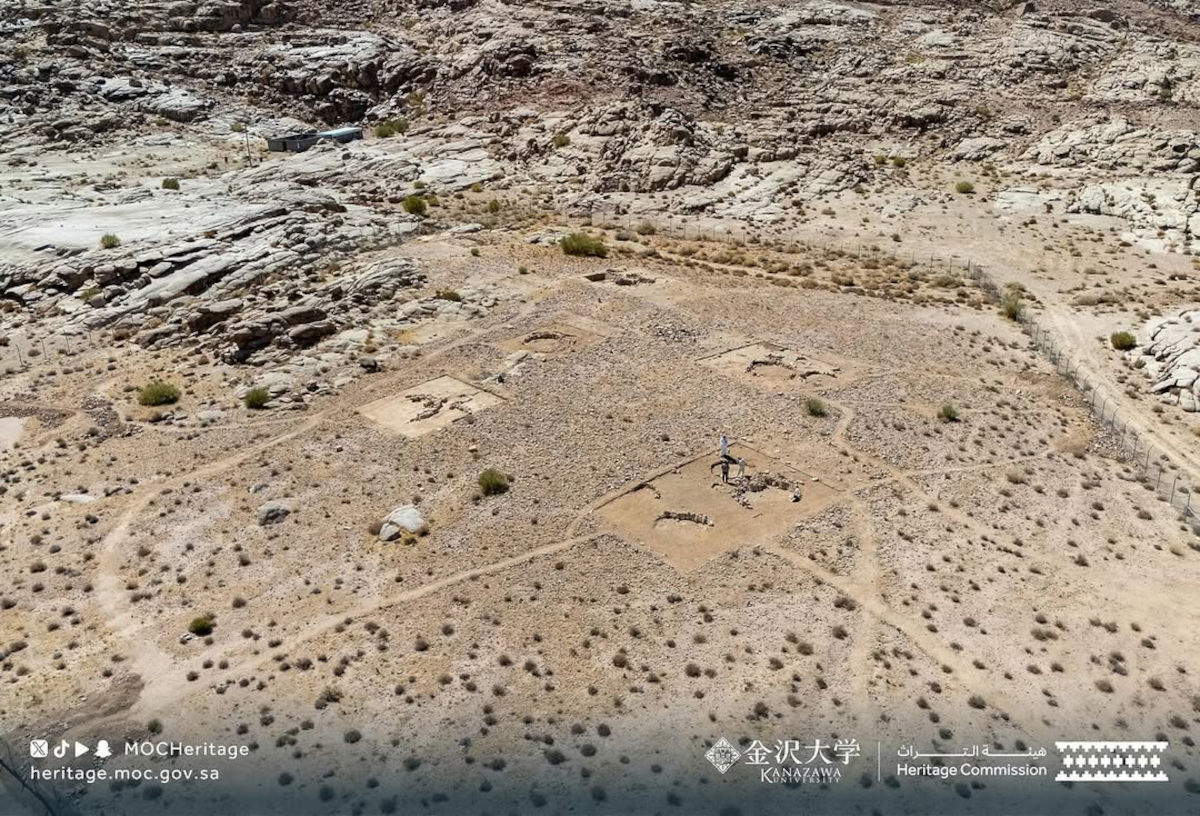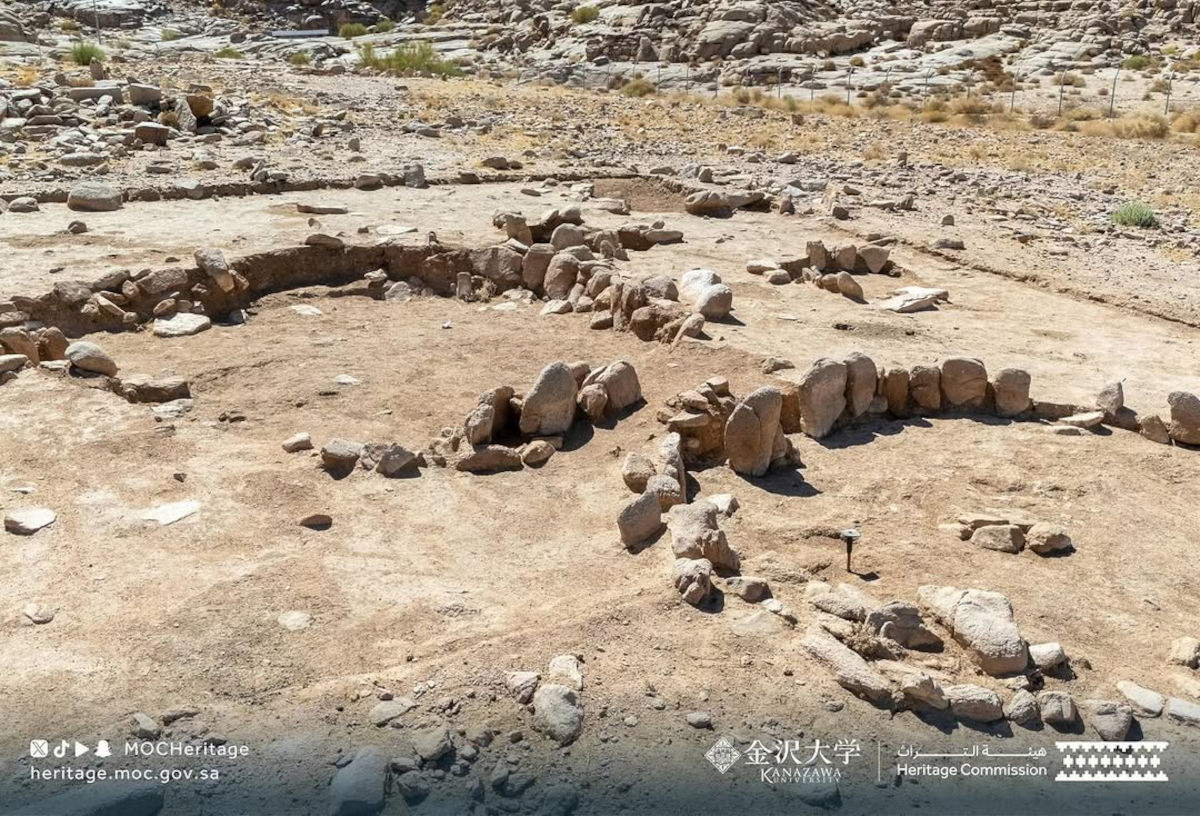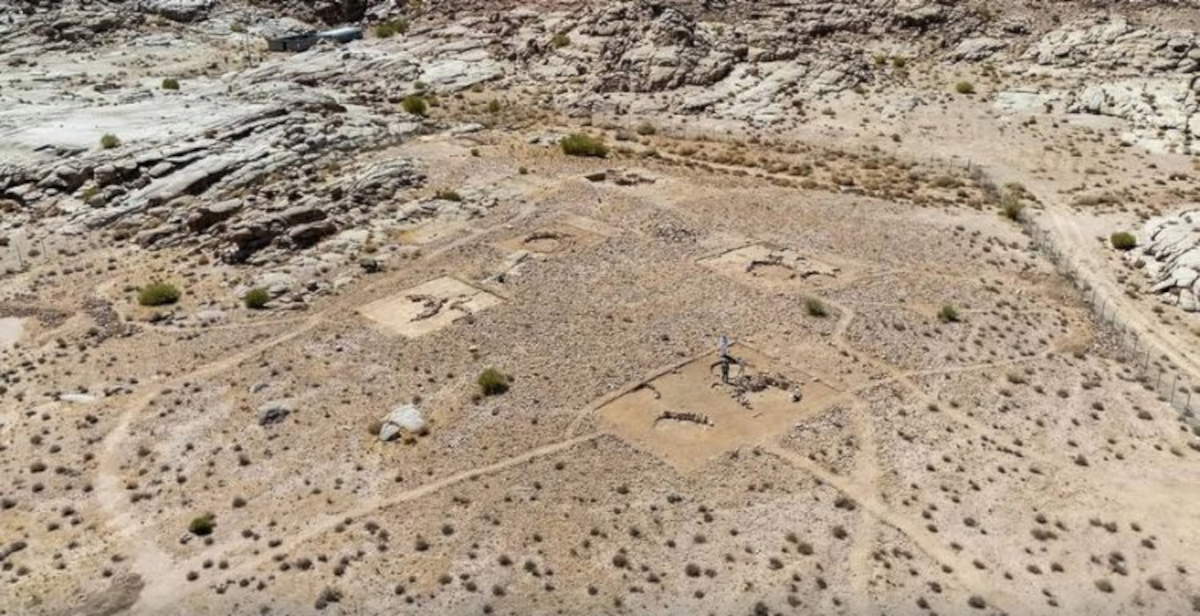A major archaeological discovery sheds new light on human origins in the Arabian Peninsula. The Saudi Heritage Commission has announced the discovery of the oldest human settlement known to date in the entire area, identified at the Masyoun site in northwesternSaudi Arabia, not far from the city of Tabuk. The announcement was made by His Highness Prince Bader bin Abdullah bin Farhan Al Saud, minister of culture and chairman of the board of the Heritage Commission, who stressed the historical value of the discovery for understanding early human life in the region.
The Masyoun site dates back to the Pre-ceramic Neolithic, a period between 11,000 and 10,300 years ago, and is the earliest evidence of stable settlement so far documented in the Arabian Peninsula. Excavations have uncovered remains of semi-circular stone structures that composed actual dwelling units, storage areas, internal passageways and hearths. The discovery of stone tools, including arrowheads, knives and millstones, along with ornaments made of amazonite, quartz and shells, reveals a remarkable level of craftsmanship and aesthetic sensitivity. The location of the site adds an additional element of interest. Masyoun is located 1,424 meters above sea level, on the eastern slopes of the Jabal al-Lawz mountain range, an area that in terms of environmental conditions and natural resources could have provided a favorable habitat for prehistoric communities. The existence of the site had been known to Saudi authorities since 1978, when it was first included in the National Register of Antiquities. In any case, only the most recent excavation campaigns, which began in December 2022, have provided a full understanding of its extent and antiquity.


The fieldwork was the result of an international collaboration involving the Saudi Heritage Commission,Kanazawa University in Japan and NEOM, a company engaged in the development of the country’s northwestern region. Over the course of four seasons of intensive excavation, which ended in May 2024, archaeologists collected vital data not only on the dwelling structures and tools found, but also on the surrounding environment. Particular attention has been paid to the documentation of rock carvings and inscriptions found in the area, which offer additional clues about the culture and symbolic practices of the communities that inhabited Masyoun.
The evidence collected confirms that the site was a stable settlement with spatial organization and functional division of rooms. The presence of areas dedicated to food storage and hearths thus suggests a more advanced level of sedentariness and social evolution than previously assumed for the pre-ceramic Neolithic in the Arabian Peninsula. At the same time, the variety of materials used to make ornaments, some of which could not be found locally, opens up the possibility of contacts and exchanges with other communities, outlining a more complex picture of the social and cultural networks of the period.

 |
| Saudi Arabia, oldest human settlement discovered in Arabian Peninsula |
Warning: the translation into English of the original Italian article was created using automatic tools. We undertake to review all articles, but we do not guarantee the total absence of inaccuracies in the translation due to the program. You can find the original by clicking on the ITA button. If you find any mistake,please contact us.